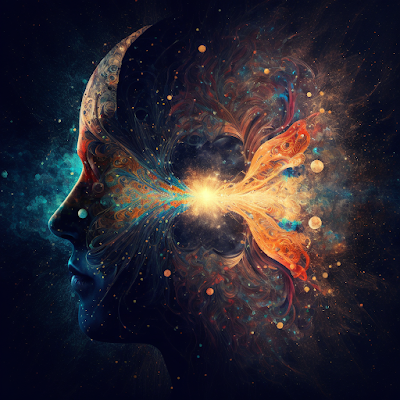The arrow of time: Why is there a direction to time?
Introduction
The arrow of
time is a concept that describes the seemingly irreversible flow of time from
past to future. It is closely linked to the laws of thermodynamics and the
initial conditions of the universe. In this blog post, we will explore the
arrow of time and its implications for our understanding of the universe.
The Beginning of the Universe
The arrow of
time is a direct result of the initial conditions of the universe. The Big
Bang, which occurred approximately 13.8 billion years ago, was a singularity of
incredibly high density and temperature. As the universe rapidly expanded and
cooled, matter began to clump together to form galaxies and stars. The density
of matter decreased as the universe expanded, leading to an increase in
entropy, or disorder. This increase in entropy is the reason why the arrow of
time points towards a state of maximum disorder.
The Time-Asymmetric Laws of Physics
Another
reason for the arrow of time is the fact that the laws of physics are
time-asymmetric. Certain processes, such as the flow of heat or the decay of
radioactive elements, can only occur in one direction. These processes are
driven by the second law of thermodynamics, which states that entropy must
always increase over time. The time-asymmetric nature of these processes means
that the arrow of time is always pointing in the same direction, from past to
future.
The Quantum Realm
Even at the
quantum level, the arrow of time is present. Particles such as electrons and
photons do not have a definite position or momentum until they are measured,
due to the Heisenberg uncertainty principle. However, the behavior of these
particles is also time-asymmetric. The measurement of a particle's position or
momentum will cause its other property to become uncertain, leading to an
increase in entropy and the arrow of time.
Causality
The arrow of
time is closely related to the concept of causality. Cause-and-effect
relationships can only occur in one direction, from past to future. Events in
the future cannot influence events in the past, and the past can only influence
the future through the laws of physics. Causality is a fundamental aspect of
our understanding of the universe, and the arrow of time is deeply connected to
it.
Conclusion
The arrow of
time is a result of the initial conditions of the universe and the laws that
govern it. It is a fundamental aspect of our understanding of the universe, and
understanding it is essential for understanding the laws that govern it. The
arrow of time points towards a state of maximum disorder, and it is always
pointing in the same direction, from past to future. The time-asymmetric nature
of the laws of physics, including those in the quantum realm, is another reason
why the arrow of time exists. The arrow of time is a fascinating concept that
challenges our understanding of the nature of time and the universe.













Comments
Post a Comment